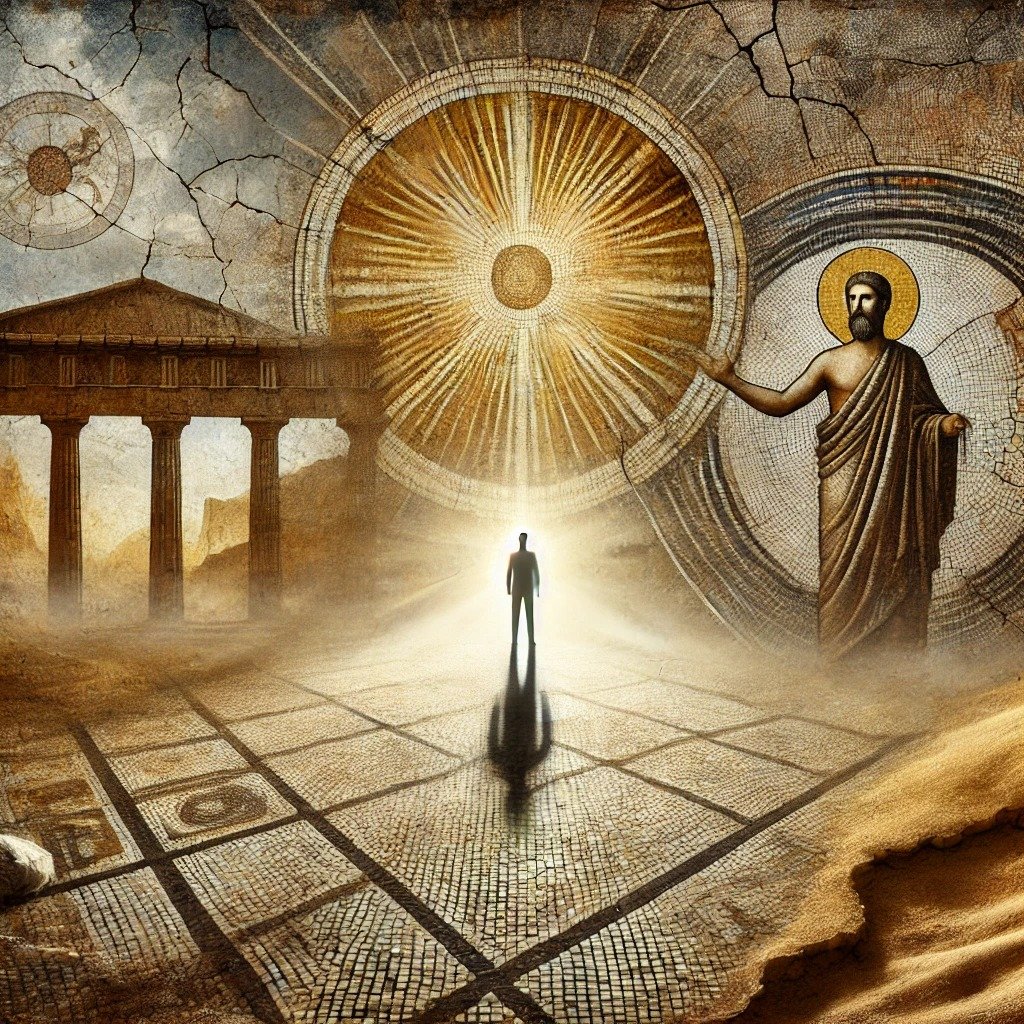Some time ago I wrote about the Megiddo Mosaic, which was somewhat recently unearthed in Israel and has sparked a crucial debate on how we understand early Christian theological theory. Dating to 230 AD, nearly a century before the Council of Nicea, this artifact describes “Jesus Christ” as “God.” While this discovery provides evidence of early grassroots veneration of Jesus as divine, it raises profound philosophical questions: How could Jesus be regarded as “God” when foundational Christian texts, particularly those of Paul, seem to deny this notion?
Jesus as Mediator, Not God
Paul’s writings in the New Testament often isolate Jesus from "God." For instance, in 1 Timothy 2:5, he states:
"For there is one God, and one mediator between God and men, the man Christ Jesus."
This verse explicitly describes Paul’s Jesus as a human (and not divine) mediator—a bridge between humanity and God—rather than God himself. Paul’s language emphasizes Jesus’ humanity, situating him as subordinate to the divine, a view further echoed in Colossians 2:2:
“…to the acknowledgment of the mystery of God, and of the Father, and of Christ.”
Here Paul, keeping to Hellenistic Judaism (the source of his mythology), where there exists only 2 (two) main Jewish deities (God the Father and God the Logos), distinguishes between God (the Logos), God the Father, and Christ, treating them as distinct entities. These verses challenge any narrative that conflates Jesus with God, suggesting that Paul’s understanding of Jesus did not align with later Christian declarations of his divinity.
The Philosophical Dilemma of Divine Mediation
The idea of Jesus as both God and mediator presents a philosophical paradox. If Jesus is fully divine, how can he mediate between God and humanity? A mediator by definition stands apart from the parties they mediate between, necessitating a degree of separation. This duality complicates theological coherence:
If Jesus is God, then his role as a mediator collapses, for how can God mediate with himself?
If Jesus is distinct from God, then his divinity requires further justification, particularly in light of texts that portray him as subordinate to the Father.
The Pauline view seems to lean toward the latter, presenting Jesus as a human man chosen by “God” for a specific mission, not as an equal part of the divine essence.
The Megiddo Mosaic: Grassroots Theology or Pagan Influence?
The Megiddo Mosaic forces us to reconsider the origins of “Jesus' divinity.” Its proclamation of Jesus as “God” could reflect the then environment of early Christian communities, where pagan, Jewish, and Roman influences converged. Unlike Paul, who addressed theological questions within a Hellenistic Jewish framework, the creators of the mosaic might have been more influenced by the Roman tendency to deify exceptional figures, blending “Jesus” into the mold of a usable pagan deity.
This raises the question: Was the belief in Jesus’ divinity an organic evolution within Christianity, or was it a theological innovation shaped by cultural expediency?
Revisiting Early Christian Diversity
The mosaic also highlights the diversity of early Christian thought. Paul’s writings show that the early church was not monolithic. Different communities held varying beliefs about Jesus’ nature. For some, Jesus was a divinely inspired human. For others, as the Megiddo Mosaic indicates, he had already become a divine figure.
This theological diversity underscores the tension between grassroots belief and institutional dogma. The Council of Nicea sought to unify these divergent perspectives under a single creed, but the mosaic reveals that belief in Jesus as divine predated these efforts. Yet, it also forces us to ask whether this belief was consistent with the intentions of the earliest Christian leaders like Paul.
Reconciling the Contradictions
The divide between Paul’s depiction of Jesus and later declarations of his divinity invites us to reconsider the theological evolution of Christianity. Was Jesus ever meant to be seen as God, or was this a later reinterpretation of his role?
Philosophically, the idea of Jesus as God may have been a response to existential questions posed by early believers. If Jesus was merely a man, could he truly embody the transformative power attributed to him? By elevating him to divine status, early Christians might have sought to resolve this tension, creating a figure who could bridge the finite and the infinite.
The Mystery of Jesus: Man, Mediator, or Myth?
Ultimately, the Megiddo Mosaic challenges the Christian theory to confront the nature of Jesus’ identity. If even Paul—the earliest and most influential Christian theorist—did not see his Jesus as God, then how should we interpret the theological innovations that emerged after his time?
What Did Paul Really Teach? or watch below


